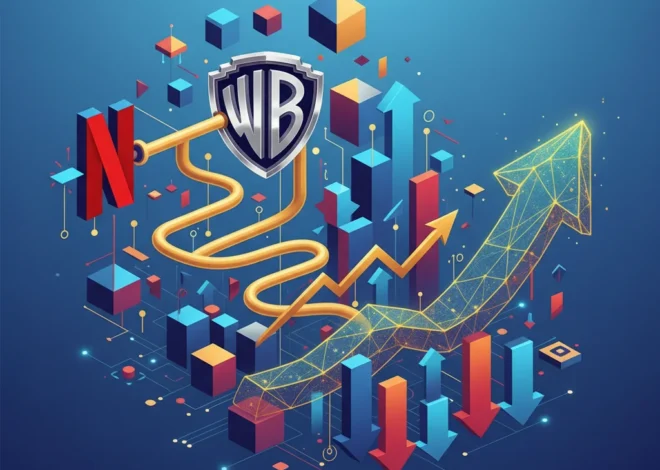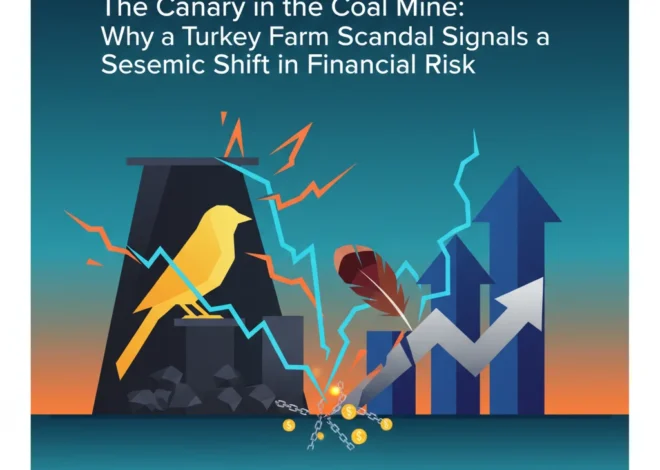
Beyond the Courtroom: Analyzing the Financial Shockwaves of Johnson & Johnson’s Talc Litigation
The global business landscape is often defined by innovation, market trends, and economic shifts. Yet, sometimes, the most significant force shaping a corporate giant’s future comes not from a boardroom or a trading floor, but from a courtroom. This is the unfolding reality for Johnson & Johnson (J&J), a titan of the healthcare and consumer goods industry. A recent development has opened a new front in its long-running legal war: a lawsuit in the UK involving some 3,000 claimants who allege a link between the company’s iconic talcum powder and cancer. While this UK case is new, it is a stark reminder of a multi-billion dollar crisis that has cast a long shadow over J&J’s finances, stock market performance, and corporate reputation for years.
For investors, finance professionals, and business leaders, the Johnson & Johnson talc saga is more than a public relations nightmare; it is a profound case study in long-tail risk, corporate governance, and the immense financial consequences of product liability. This article delves beyond the headlines to analyze the deep-seated financial implications of these lawsuits, their impact on the stock market, and the critical lessons for the modern economy.
A Legacy of Allegations: The Roots of a Multi-Billion Dollar Crisis
The core of the issue dates back decades. The lawsuits, which now number in the tens of thousands globally, allege that J&J’s talc-based products, including its signature Baby Powder, were contaminated with asbestos, a known carcinogen, and that prolonged use led to serious health issues like ovarian cancer and mesothelioma. The claimants, and the recent BBC report on the UK case, highlight that the legal battle hinges on internal company memos and scientific reports, suggesting the company may have been aware of the potential risks for far longer than it publicly admitted.
Johnson & Johnson has consistently maintained that its talc products are safe and asbestos-free, citing decades of independent scientific studies. However, juries have often been swayed by plaintiffs’ evidence, leading to staggering verdicts. This is not just a legal debate over scientific evidence; it’s a battle over corporate transparency and accountability that has profound implications for the company’s balance sheet and its standing in the financial world.
FTSE 100's Ascent: Decoding the Dance Between a Rising Index and a Falling Pound
The Financial Toll: Charting the Cost of Litigation
Quantifying the full financial impact of the talc litigation on Johnson & Johnson is a complex exercise in financial analysis. The costs extend far beyond legal fees, encompassing massive jury awards, settlement reserves, and the strategic, albeit controversial, financial maneuvers designed to contain the liability. To date, the company has faced costs and potential liabilities estimated to be in the tens of billions of dollars.
One of J&J’s most notable strategies was the “Texas two-step,” a legal maneuver where it spun off its talc liabilities into a new subsidiary, LTL Management, which then immediately filed for bankruptcy. The goal was to ring-fence the talc claims and force claimants into a consolidated settlement fund. However, this strategy has faced significant legal challenges, with federal courts twice rejecting the bankruptcy filing, ruling it was not filed in good faith because the parent company, J&J, was not in financial distress. J&J recently proposed a $6.48 billion settlement to resolve the majority of the ovarian cancer claims through a third bankruptcy filing, a move that still requires claimant approval.
The following table provides a simplified overview of key moments in this protracted legal and financial battle:
| Date/Period | Key Event | Financial/Stock Market Implication |
|---|---|---|
| 2018 | St. Louis jury awards $4.7 billion to 22 women (later reduced). | J&J stock (JNJ) experiences a significant single-day drop, wiping out billions in market value and highlighting investor concern. |
| 2020 | J&J announces it will stop selling talc-based baby powder in the U.S. and Canada. | A major business decision driven by litigation risk, impacting a legacy brand and signaling a shift in corporate strategy. |
| 2021 | J&J executes the “Texas two-step,” creating LTL Management to file for bankruptcy. | An aggressive financial and legal strategy to cap liability, closely watched by the investing and legal communities. |
| 2023 | U.S. appeals court rejects LTL Management’s first bankruptcy filing. | A significant legal setback, returning uncertainty to the stock and increasing the perceived financial risk for investors. |
| 2024 | J&J proposes a $6.48 billion settlement plan; a new major lawsuit is filed in the UK. | Ongoing attempts to quantify and resolve the liability, while the geographic scope of the legal challenge expands, impacting global economic forecasts for the company. |
The Stock Market’s Verdict: Pricing in a “Litigation Overhang”
For those involved in the stock market, from day traders to institutional investors, the J&J case is a masterclass in how non-financial risks can materialize into tangible market impact. The term “litigation overhang” is frequently used by analysts to describe the cloud of uncertainty that these lawsuits cast over J&J’s stock (JNJ). While the company remains a financial powerhouse with a diversified portfolio of pharmaceuticals and medical devices, this overhang suppresses its valuation. Investors must price in the risk of another multi-billion dollar verdict or a larger-than-expected settlement, which creates volatility and can deter more risk-averse capital.
Modern investing relies heavily on financial technology and sophisticated algorithms for risk assessment. However, quantifying the outcome of thousands of individual legal cases is notoriously difficult. This is where human analysis of legal precedent, corporate strategy, and public sentiment becomes crucial. The ongoing saga demonstrates that even in an age of high-frequency trading and AI-driven analysis, certain fundamental risks tied to corporate ethics and governance remain paramount in determining long-term value.
The £100 Billion Diagnosis: Why Reforming the NHS is the Key to Unlocking Britain's Economic Future
The New Frontier: Global Implications and the Future of Corporate Accountability
The expansion of the legal fight to the UK is a pivotal development. It shows that this is no longer just an American legal issue but a global challenge to one of the world’s largest multinationals. This internationalization of product liability claims could set a precedent for other global corporations, fundamentally altering the landscape of risk management and international business law. It forces companies to consider not just the legal framework in their home country but a complex patchwork of international regulations and consumer protection laws.
This situation also raises important questions about supply chain transparency and product safety in our complex global economy. In the future, technologies like blockchain could play a transformative role. A secure, immutable blockchain ledger could be used to track every component of a product, from raw material sourcing to manufacturing processes and safety testing results. Such a system could provide an unimpeachable record of a product’s history, offering a new level of assurance to both consumers and investors and potentially preventing future crises of this scale. This convergence of legal accountability and emerging financial technology will undoubtedly shape the future of corporate banking and finance, as lenders and insurers will demand greater transparency.
The discipline of economics teaches us that uncertainty is a drag on growth. For J&J, the talc litigation represents a significant and persistent source of economic uncertainty, impacting its ability to plan long-term capital allocation, M&A activity, and even its credit relationships with major banking institutions. According to a report from the Casualty Actuarial Society, the trend of “social inflation”—where litigation costs and jury awards rise faster than general economic inflation—is a major concern for the entire corporate sector, and the J&J case is a primary exhibit.
Beyond the Tweets: Analyzing the Financial Fallout of Elon Musk's 8M Executive Settlement
Conclusion: A Case Study in Risk, Reputation, and Resilience
The lawsuit brought by thousands in the UK is the latest chapter in a story that is far from over. For Johnson & Johnson, the path forward involves navigating a treacherous legal and financial landscape while attempting to rebuild consumer and investor trust. For the rest of the business world, it is an invaluable, if painful, lesson. It underscores that historical actions can have enduring financial consequences and that true corporate health is measured not just by quarterly earnings but by a foundation of transparency, accountability, and robust governance.
As this saga continues to unfold, it will remain a critical reference point in discussions on finance, investing, and corporate strategy. It serves as a powerful reminder that in today’s interconnected economy, a company’s greatest liability may not be on its balance sheet, but hidden in decades-old memos and the trust it has built—or broken—with the public.


